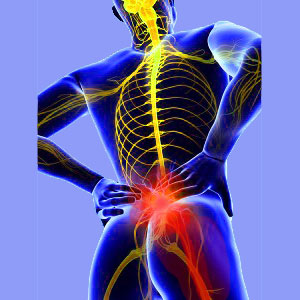
The exact meaning of sciatica can be a confusing topic for patients who suffer from lower back, buttocks, leg or foot pain, but are not sure about the definitive cause of their symptoms. The exact meaning of the term can also be equally confusing for patients who have been diagnosed as suffering with sciatica, yet do not have any known problem in their lumbar spinal region.
Diagnostic nomenclature is usually well defined in the medical establishment. However, sciatica is a definite exception to this rule, since the condition is equally confounding to most doctors as it is to laymen. Medical professionals are just as guilty of misusing the term as anyone else, if not more so. This errant practice has further decreased public comprehension of what sciatica truly is and what it is not.
This dissertation seeks to clarify, once and for all, the definition of sciatica, as well as explain the many facts and myths of sciatic nerve pain and pseudo-sciatica.
Exact Meaning of Sciatica
Sciatica is never a diagnosis unto itself. Instead, the term defines a symptom set that encompasses pain, paresthesia and weakness that are expressed in the lower back, buttocks, legs and/or feet. Furthermore, true sciatica must be caused by a spinal structural issue in the lower region of the vertebral column, called the lumbar spine. When symptoms exist, but the cause does not reside in the lumbar spine, the condition should be called pseudo-sciatica, since it mimics true sciatica in every regard except for its anatomical origin.
Sciatica is always caused by something. It is never a condition unto itself. You can not be diagnosed with sciatica. You can be diagnosed as having sciatica symptoms due to a herniated disc, arthritic process, spinal curvature problem or other lumbar concern. You can also be diagnosed as suffering from pseudo-sciatica due to piriformis syndrome, diabetic neuropathy or regional ischemia, among many other prospective source processes.
Most Accurate Sciatica Description
Regardless of definitions, the truest meaning of the term sciatica denotes suffering. Since sciatica is a multiple expression pain syndrome that is known to become a chronic concern, the impact on life is typically tremendous.
Patients often experience severe symptomologies at the least opportune times in life. While the circumstances vary from patient to patient, some of the most common scenarios when symptoms strike include: when trying to work, when trying to sit and relax, when trying to exercise and when trying to recline to sleep. Since all of these activities are necessary for life and health, suffering disruptive sciatica symptoms during any or all of these times can definitely create considerable hardship.
Worse still, sciatica is known to defy treatment, regardless of what type of therapy is used to combat the symptoms. From pharmaceutical treatment to injection therapy to surgical interventions, there are few cures for sciatica provided and an ever-growing number of patients who continue to suffer horrific daily agony.
Therefore, we choose to define sciatica as a terrible suffering in the lower body that statistically resists treatment, endures long-term and disrupts normal living to a significant degree.
Misery is the Meaning of Sciatica
We hope that you are now clear on what sciatica truly is and what it is not. Despite what your doctor says, sciatica is not a diagnosis. If you are pronounced as suffering from sciatica, we suggest you show your clueless doctor this essay. In fact, tell them to read this entire website, since they obviously need further clarification on back and leg pain if they are to deal with it effectively.
If you have symptoms and are looking for information on proper diagnosis and identification of the actual causation, then we commend you. This is a great step forward in proactivity, since it is strongly suggested that all patients should become involved in their own healthcare. However, it may be very difficult to determine the true cause of sciatica or pseudo-sciatica. Statistics clearly demonstrate that most cases are misdiagnosed, which also helps to explain why treatments typically disappoint in their efficacy.
We recommend searching out a doctor who will perform an exhaustive diagnostic process in order to ascertain the true cause of pain before simply recommending treatment. We know that this quest can be difficult for most patients and impossible for many. It is a sad comment on our modern medical establishment, but it remains fact that most doctors do not bother with involved proper diagnostic protocols for dorsalgia. These processes are too lengthy and unprofitable. It is far easier to assume a causation based on antiquated ideology and organize treatment that the doctor virtually knows will fail, before it is even rendered. It is sad, but profitable and unfortunately, also almost universal within the back and leg pain treatment sector.





